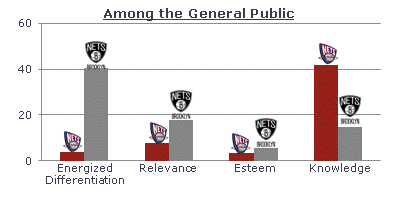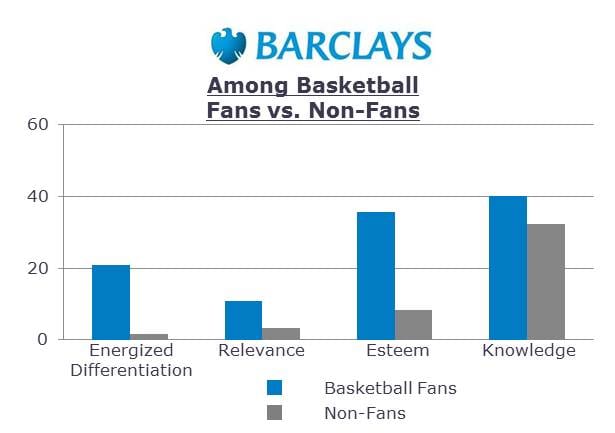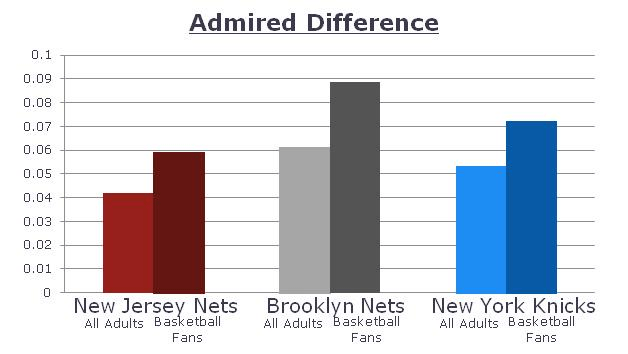Month: January 2013
Breaking Dawn: Proud to be American
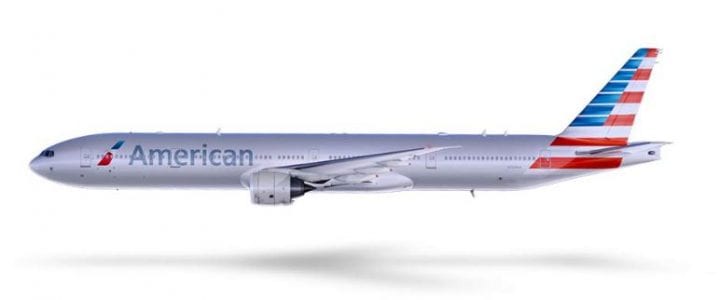
by Dawn Turner – January 2013
Today (9:00 CST) we revealed a new look for American Airlines. I’m asking my fellow board members on the S3 Report and our readers to join me in celebrating this significant step forward in our journey to become a more modern, world class global airline worthy of the name American.
And, in anticipation of your questions: No, I didn’t design the new look. I was tasked with helping plan the launch of an iconic American brand that hasn’t been refreshed in 45 years (what an honor!). It is a significant milestone for the company, and one of those career-defining moments for me, so I hope you will join me in watching the unveiling today:
January 17, 2013: www.aa.com/newamerican
Tweet #newAmerican
We’ve been hard at work building an exceptional travel experience with our customers at the center:
- adding hundreds of new planes – including the Boeing 777-300ER set to fly in a matter of weeks
- cutting edge technology, and
- more ways to keep our customers comfortable and connected throughout their travels.
Today’s announcement takes our transformation one step further.
I look forward to strengthening our valued partnership throughout this journey, and invite you to be among the first to see our new look. Many of you know I have recently been preoccupied with another project, and, well, this is it! I am very happy to be able to share this moment with you.
Just as Rome wasn’t built in a day, we understand the rollout of our new look will take time, but are excited to take this step forward with you today. For our business partners, we will reach out to you to help define a conversion plan including our new look in your communications and channels. Thank you for your continued partnership, and for putting your trust in American Airlines.

The 3 Cs of Effective Media Partnerships
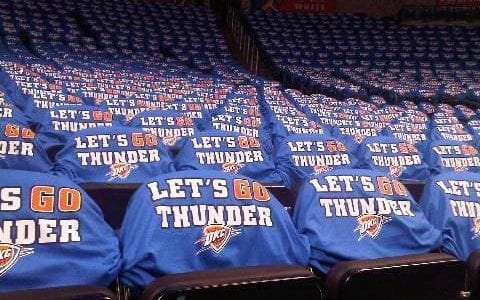
by Wayne Guymon – January 2013
How do sponsors stand out from one another?
As advertisers’ marketing and branding objectives expand beyond simple metrics, properties must find new ways to deliver results. Selling strictly media buys or signage assets is no longer sufficient. By developing integrated partnerships, properties can help an advertiser’s messages stand out in a crowd.
Grasping opportunities to communicate to all of a team’s fans means spending advertising budgets more efficiently. Commercials and signs tell part of the story, but true integration comes from investing in the 3 C’s of brand communication.
[dropshadowbox align=”center” effect=”lifted-both” width=”250px” height=”” background_color=”#ffffff” border_width=”1″ border_color=”#dddddd” ]
The 3 C’s of Brand Communication for Sponsors
- Community programming,
- Customized features, and
- Charitable programs.[/dropshadowbox]
By taking the message these additional steps, the client reaches even further and fans receive a clearer message. As Tyler Epp, Vice President of Corporate Partnerships with the San Diego Padres, stated, “Driving revenue is more than just media numbers and spreadsheets.”
Virtually all advertisers have a community based initiative they support, whether supporting the military, civic pride, youth-based programs or health initiatives. By activating these programs through teams and properties, they can effectively communicate to a fan base without coming across as boastful. They can demonstrate to their constituents, both internal and external, their pride in supporting these initiatives.

“Looking back, it was a huge risk for us to invest at such a level with the Thunder. But now I can state that the cost has been returned to us immensely. The credibility we received as a “real partner” in the city for our sponsorship has led to people thanking us for our support in a sport and team that they love, ” said Cindy Hunter, Owner/Vice President, US Fleet Tracking. “General fans are appreciative and other sponsors have reached out to us on collaborative endeavors. The in-arena signage has bred name recognition, while the television assets allow us to explain our products and services as well as highlight the different industries we serve.”
US Fleet Tracking also collaborated with the Thunder to promote the 2-1-1 Crisis Hotline to communicate its care and concern for community through this non-profit organization.
As an integral partner with open lines of communication, the Thunder and US Fleet Tracking were able to move quickly to mobilize fan passion when the Thunder made their first trip to the conference finals in 2011. Customized shirts sponsored by US Fleet Tracking were designed to blanket the arena for the first game in the series. Cindy still sees these shirts at every game and often around the community.
By taking this approach of integrated partnerships, companies stand out from their competition. Utilizing integrated assets increases a fan’s loyalty to a brand by capitalizing on the goodwill associated with their passion toward their home team.
Welcome to the Sports Sponsorship & Sales (S3) Report
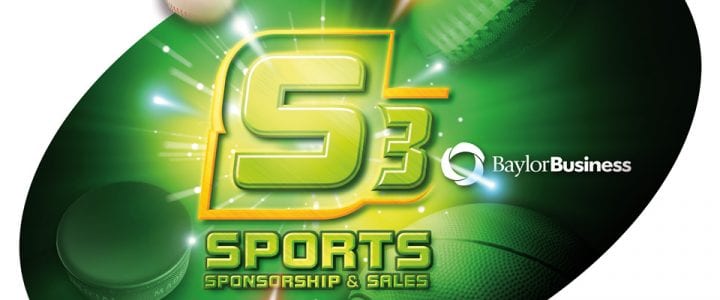
by Kirk Wakefield – January 2013
Join the S3 Community to:
Participate: Join the discussion on our LinkedIn group: Click here.[dropshadowbox align=”right” effect=”lifted-both” width=”250px” height=”” background_color=”#F5F6CE” border_width=”1″ border_color=”#dddddd” ]Content Categories:
- Selling Sports: tickets, experiences, sponsorships, premium/VIP
- Leadership: Leadership Freak and guest columns
- S3 Spotlight on alumni and board members[/dropshadowbox]
Access: All current month articles are available for those in the S3 Community. Click here to join. All archives from previous issues are open access.
Share. The purpose of the Sports Sponsorship & Sales (S3) community is to share best practices with each other. Content is written by members of the sports industry to share with the industry. Share freely! If you have content ideas, please contact the editor (Kirk_Wakefield@Baylor.edu).
Network. The S3 Advisory Board and contributors are among the most respected in the business of professional sports. Join our community (free) and connect with leaders and learners in the industry.
Spread the word. More great content is coming from the Baylor S3 Advisory Board & our partners at Baylor University. Click on members’ names to view their LinkedIn profiles.
| Team/Organization | S3 Report Contributor | See their 2013 posts in: |
| MLB: New York Yankees | Dan Rosenthal | May |
| MLB: New York Yankees | Nick Forro | July |
| MLB: Philadelphia Phillies | Derek Schuster | February |
| MLB: San Diego Padres | Eric McKenzie | June |
| MLB: San Diego Padres | Jeremy Walls | December |
| MLB: San Diego Padres | Tyler Epp | February and December |
| MLB: Texas Rangers | Jason Fortune | September |
| MLB: Texas Rangers | Katie Morgan | September |
| MLB: Texas Rangers | Wade Graf | February |
| MLS: FC Dallas | Kris Katseanes | October |
| MLS: Houston Dynamo | Bryan Kraham | April and November |
| NBA: Atlanta Hawks | Corey Breton | April |
| NBA: Atlanta Hawks | Mitch Ried | November |
| NBA: Charlotte Bobcats | Chris Zeppenfeld | June |
| NBA: Charlotte Bobcats | Flavil Hampsten | March |
| NBA: Cleveland Cavaliers | Damion Chatmon | December |
| NBA: Dallas Mavericks | George Killebrew | October |
| NBA: Dallas Mavericks | Jeff Brown | August |
| NBA: League Office (TEAMBO) | Murray Cohn | January and February |
| NBA: Orlando Magic | Jamie Weinstein | August |
| NBA: Phoenix Suns | Bob Hamer | March |
| NBA: Washington Wizards | Jake Reynolds | July |
| NBA:Philadelphia Sixers | Charles Johnson | February |
| NBDL: Texas Legends | Bill Boyce | January |
| NBDL: Texas Legends | Drew Mitchell | June |
| NFL: Denver Broncos | Chris Faulkner | April |
| NFL: Houston Texans | Greg Grissom | August |
| NFL: New York Jets | Russell Scibetti | November |
| NFL: Tampa Bay Buccaneers | Ben Milsom | March |
| NHL: Columbus Blue Jackets | Drew Ribarchak | May |
| NHL: Columbus Blue Jackets | Jeff Eldersveld | August |
| NHL: Dallas Stars | Brad Alberts | December |
| NHL: Dallas Stars | Matt Bowman | October |
| NHL: LA Kings (LA Galaxy) | Kelly Cheeseman | September |
| NHL: Los Angeles Kings/AEG | Aaron LeValley | April |
| NHL: New Jersey Devils | Eric Kussin | June |
| NHL: New Jersey Devils | Krissy Keen (S3 ’09) | November |
| NHL: Phoenix Coyotes | Ken Troupe | February |
| Racing: Feld Entertainment | Ryan McSpadden | July |
| University: ASU | Rocky Harris | April and December |
| University: Baylor | Brian George | July |
| University: IMG College | Shane Hildreth | May |
| University: Temple | Todd Pollock (S3 ’06) | December |
| Academy Sports + Outdoors | Anita Sehgal | February |
| American Airlines | Dawn Turner | May |
| AT&T | Bill Moseley | March |
| BAV Consulting | Anne Rivers | January and June |
| Chevrolet | Steve Flynn | July |
| Fathom Delivers | Steve Kessen | October |
| Fox Sports San Diego | Wayne Guymon | January and October |
| JGraydon Sports | John Burnett | |
| Leadership Freak | Dan Rockwell | Monthly |
| Legends Hospitality | George Manias | September |
| MediaLink | Eric Fernandez | July |
| Pizza Hut | Lynda Carrier Metz | November |
| Reliant Energy | Tom Hughes | September |
| The Marketing Arm | Bill Glenn | April and August |
| Website Alive | Bryan Apgar (S3 ’08) | May |
S3 Board Member Spotlight: Kris Katseanes, FC Dallas

by Travis Martin – January 2013
Kris Katseanes, Vice President of Ticket Sales and Service for FC Dallas, has been an invaluable member of the S3 Advisory Board. Because of Kris’ leadership and willingness to mentor the careers of young people entering the profession, Baylor’s S3 program annually places interns and new employees with FC Dallas.

Each fall semester Katseanes visits the Baylor campus to interview S3 students for internships the following summer. For most juniors this is the first real interview with a team. Katseanes helps calm the tension as students walk into the one-on-one interviews. As with other on-campus interviews with board members, students meet with the S3 Program Director, Dr. Darryl Lehnus, to help learn for the next interview.
All the students who meet with Mr. Katseanes quickly learn about his opinion of the value of hard work. His strong work ethic was instilled in him since he was a boy. Growing up on a potato farm, hard work was the only way to go when your day starts at 4:00 am.
One demonstration of this kind of dedication came one afternoon when Katseanes found inefficiencies in the team’s database. Salespeople were wasting time and it was clear the system needed organizing. Since the team did not have a specific person assigned to the database, Katseanes took it upon himself to work from 7:00 pm that night to 7:00 am to clean up the leads in the system. This not only helped them gain more sales, but gained admiration around the office for making everyone’s life easier.
Along with integrity and networking, work ethic represents part of the Baylor S3 W-I-N acronym instilled in students. Katseanes believes we reap what we sow and luck finds people who work hard. For young professionals, the best way to improve your career is to volunteer for anything and everything. This puts you ahead of the person next to you and gets you noticed by the right people.
“But, you have to be careful,” Katseanes says. “I see young professionals always looking to the next step so much that they can’t be content with the current. The grass isn’t always greener on the other side, so find a place where you can be happy.”

“He’s fair, creative, solution and result oriented,” said Kelly Weller, Vice President of Marketing, Communications & Strategic Planning with FC Dallas. “Everyone has a chance to succeed with him. They are given all the tools, resources and time to perform their best to not only hit their individual goals, but to help achieve the overall objectives of the company. He’s one of a kind in my book!”
Katseanes loves working with the S3 program because of the leadership the program offers to its students. At FC Dallas, Katseanes has developed a leadership development program that helps employees set written goals with measurable results and deadlines. Katseanes enjoys working with the the S3 professors and S3 graduates, because the emphasis is on preparing to enter a career and not just get a job.
S3 Alumni Spotlight: Jay Kinderknecht, Order My Gear

by Blake Cargill – January 2013

[/dropshadowbox]
Transitioning from college into the work force always poses challenges and growing from them is necessary for success.
Jay Kinderknecht (S3, ’12) first interned with the New York Mets following his junior year in the S3 program at Baylor. “It was great getting exposure to several areas of the Mets organization,” said Jay. “While I started in a CRM position, I grew into sales, marketing, and gameday operations roles as well.”
[dropshadowbox align=”right” effect=”lifted-both” width=”275px” height=”” background_color=”#ffffff” border_width=”1″ border_color=”#dddddd” ]”Jay was our first intern specializing in working with our newly launched CRM database. He was an integral part our team, providing assistance in training, prospecting, and lead generation for our sales team. Jay was a top performer in his intern class and has been able to translate the skills he learned into a successful professional career.”
Brian Towers
Director, Inside Sales
New York Mets
[/dropshadowbox]
After considering offers from professional sports teams during his senior year, Kinderknecht decided he wanted to work in the college sports environment. Jay started working for IMG at the University of South Florida as an Account Executive in June of 2012.
Raised in Columbia, Missouri, Kinderknecht had to make many adjustments when living in South Florida. “Professionally I knew what to expect, but personally it was hard,” Jay shared recently. “The culture was a lot different from my experiences living in Missouri, Texas, or New York.”
While working at South Florida, Kinderknecht gained valuable lessons in the selling of sports. As an account executive, he was the point of contact for customers buying tickets. Jay said he learned through this, “how much preparation and thought should go into the product before you sell it.”
Using leverage is an aspect of ticket selling Kinderknecht gained when South Florida hosted Kansas State University in football. South Florida required groups to double-up on purchases in order to get tickets for this game. If a group brought at least 20 people to the Kansas State game, the purchase also required them to do the same for any other game. The high demand for tickets enabled South Florida to do this. They had no problem selling tickets even with the tie-in requirement for group sales.
Timothy Riva, a co-worker, said of Jay, “His unquestioned work ethic was proven by the results he was able to achieve with our USF staff.” Another co-worker, Bryan Mathis, added, “Jay displayed a strong work ethic and incredible attention to detail. But most importantly, he had a sincere desire to make our team as strong as it could be.”

After fulfilling his initial contract with IMG, Kindernecht was hired as a sales executive for Order My Gear, a software company that works for different sporting goods companies. The company’s objective is to simplify the supply chain between sporting gear companies and high school teams, groups, or organizations.
Kinderknecht is excited about the new opportunities this position presents, as well as the leadership in place. “I know I am working with someone who has my professional and personal best interests in mind.” Kinderknecht will also be given more responsibility through the position. He will travel more and sell a broader range of products than at IMG.
Kinderknecht says that he now welcomes challenges. The new position will pose different challenges and present new opportunities. He believes working with Order My Gear will strengthen his track record and help him become successful in the future.
How to manage the new generation of sellers
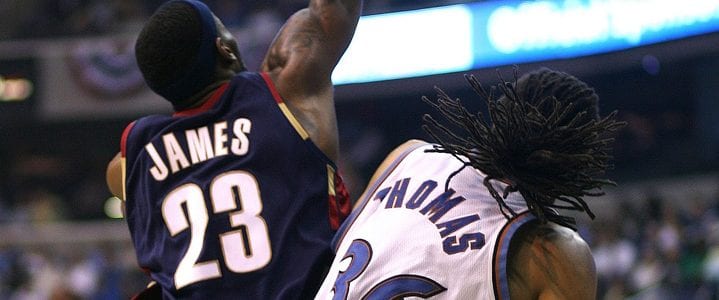
by Murray Cohn – January 2013
Part 1
“I want it all. I want it now.”
On a recent team visit I met an entry level ticket seller who’d been there two months. He said, “Murray, I am ready to manage my own staff. I know everything I need to learn about ticket sales.” Laughing, I looked at him and said, “I have been doing this for 25 years and I still learn every day.” I added, “Plus, to make that statement, it might help if you were first on the sales board instead of eighth out of twelve.” Read more
The five powers of permission

by Dan Rockwell – January 2013
Old style leaders are about giving permission to supplicants. Their followers seek permission. It’s an “I/you” rather than “we” dynamic. Leaders have power and followers must ask.[dropshadowbox align=”right” effect=”lifted-both” width=”300px” height=”” background_color=”#ffffff” border_width=”1″ border_color=”#dddddd” ]”Asking softens a tough request so the other person hears it. Asking signals you want help. Using a ‘we’ approach builds momentum within a sales team.”
Night Train Veeck
Group Sales Executive
Chicago White Sox
[/dropshadowbox]
I/you leadership is disengaging and dis-empowering.
Successful leaders do more than give permission, they get it. Permission answers the question, “Is it ok with you if we talk about something?”
Five Powers of Permission:
1. “May I …” builds trust.
2. “Would it be ok if …” shares power.
3. “Do you mind if …” equalizes social status.
4. “Could we discuss…” prevents stagnation. Permission moves the agenda forward when topics are awkward.
5. “Is it ok with you, if…” engages.
Permission opens doors, protects relationships, and prevents stagnation.
Ask permission to:
1. Bring up uncomfortable topics. Set a date for the conversation.
2. Explore progress.
3. Correct. “May I …”
4. Challenge.
5. Give feedback.
6. Say what you see. “Is it ok if I share something I see …”
Four responses to NO:
When permission isn’t granted? Ask:
1. How business-critical is the topic?
2. Is there a deeper issue to address?
3. Can you let it go?
4. Must you address it, regardless?
When topics are mission critical, say, “We need to talk about this soon.”
Just a courtesy:
Isn’t asking permission just social courtesy? Yes, sometimes it is. But, social courtesies smooth and protect. Perhaps you prefer to be discourteous and abrasive?
Four reasons leaders don’t ask permission:
1. Arrogance. It’s too humbling to ask and too easy to tell.
2. Fear of seeming weak.
3. Fear of losing power.
4. Authoritarian rather than relational leadership styles.
Discussion with your sales team
“Managers seen as always being negative aren’t followed,” explains Gregg Bennett, Director, Center for Sport Management Research and Education at Texas A&M University. “In general, people want to be around positive individuals in everyday life and the work environment.”

- What does permission-leadership look like in your world?
- What are the pros and cons of permission-leadership?
Special thanks to Chris Radley for the cover photo.
How to turn ad agencies into influencers, allies, and advocates
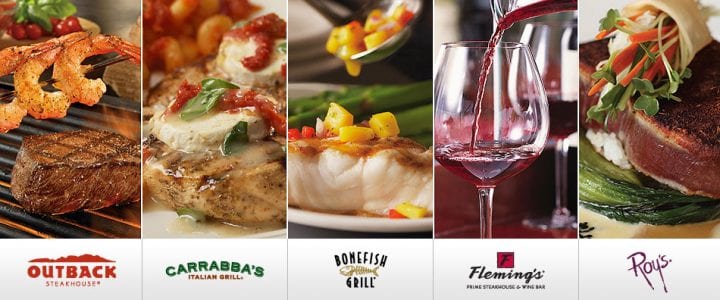
by Bill Boyce – January 2013
If sponsorship salespeople want to turn advertising agencies into advocates, we must understand their needs like any other relationship. How do we do that?
First, understand how an ad agency works. Agencies are divided into three basic functions with whom we interact: account management/client servicing, creative, and media planning & buying.
Second, understand how the media side is structured. Because account managers and planners are concerned with strategy, they are our best contacts within an agency. Following is a diagram of a typical ad agency media department. The planning (left) is responsible for developing strategy. The buying (right) side is responsible for executing the strategy.

Third, understand the language. The following are basic media definitions you should know before going into the meeting or call.
Fourth, always call with a specific client in mind. Agencies do not like general sales calls about their client roster.
Finally, ask the right questions. The following are good questions to supplement your standard needs analysis questions.
[dropshadowbox align=”right” effect=”lifted-both” width=”250px” height=”” background_color=”#ffffff” border_width=”1″ border_color=”#dddddd” ] The Agency View
“As we plan our annual marketing calendars, we look across the media mix assessing all the tools.
There are more choices now than ever before. Marketing budgets are ruthlessly analyzed to ensure each dollar is working hard toward the brand’s objectives. A sponsorship’s ROI will be compared to all other ways those marketing dollars could be deployed. Playing up the differences vs other media types or programs and tying sales whenever possible to the sponsorship makes it easier for a marketer to sell the program internally.”
Jody Bilney, EVP, Chief Brands Officer, Bloomin’ Brands
[/dropshadowbox]
- “What is the fiscal year for this client?” The objective is to determine when proposals are reviewed and budgets set.
- “When is the media planning cycle?” During what months is the media team planning for the fiscal year?
- “Does your client include sports in their media plans?” Drill down: Do they plan for sports generally or pick teams? What level of detail does the client provide?
- “What is the role of sports sponsorships in the client’s media plan?” When they add sports (sponsorships) to a plan, what do they believe will be the benefit for the client?
- “What current sports sponsorships do you utilize?” Which sponsorships are working? What do they like? Not like?
- “What are your evaluation criteria?” What is important to you when reviewing a proposal?
If you find yourself talking to someone on the buying (right) side of the diagram, don’t conclude all is lost. Try asking:
- “Is sports inventory or sports sponsorship inventory specified in the client’s media plan?” If not, you will need a longer conversation with the media planners. If the answer is yes, then proceed to the next question.
- “For the sports spend, what is the target audience for this particular buy?”
- “What is the CPM/CPP that they are planning to buy against?”
- “Will you consider us for inclusion on the media buy?” Don’t be afraid to be direct: “Are we on the plan?” Ask a few additional questions to confirm intent. If not, ask the next question.
- “Why are we not included in the media plan?” This is the opportunity learn and overcome objections.
- Close: “We would like for our inventory to be considered for upcoming media buys. What do you suggest as next steps so we can help each other?”
Develop a proposal and pitch as usual. Treat the account manager as your partner to create a customized solution. With knowledge of agencies, their language, personnel, and relevant questions, you can confidently turn agencies into influencers, allies, and advocates. Go for it!
The Nets move to Brooklyn: Brand boon or bust?

by Anne Rivers – January 2013
Whose brand is bigger? Knicks or Nets?
What happens to teams as they move cities? Do people miss the Seattle SuperSonics? The LA Rams? How about moving the Nets from New Jersey to Brooklyn?
Some New Jersey residents may miss the Nets, but the general public and basketball fans already believe the move was a good one.
[dropshadowbox align=”right” effect=”lifted-both” width=”250px” height=”” background_color=”#ffffff” border_width=”1″ border_color=”#dddddd” ]Three Takeaways
- BAV Consulting tracks the value of over 3500 brands, including pro franchises, each quarter from over 17,000 nationally representative consumers.
- Energized differentiation–being perceived as authentic, independent, dynamic, and unique–is what drives the value of sports franchises and brands.
- Sponsors (Barclays) gain measurable brand value through a clear association with a dynamic franchise (Brooklyn Nets). [/dropshadowbox]
Each pro team and another 3,500 brands are tracked in the BrandAsset Valuator (BAV) database. Beginning in 1993, we now collect opinions from over 17,000 respondents every quarter to track brand values. What do we know about the Nets since they moved?
In the BAV, the Brooklyn Nets are more differentiated, more relevant and have more momentum than the New Jersey Nets. People believe the new team brand is more authentic, independent, dynamic and unique. They want to learn more about The Nets since moving to Brooklyn.
Why this new fervor? The borough would be the fourth largest city if it could secede from New York City. Brooklyn itself is a powerful brand. Residents say they are from Brooklyn, not New York. Brooklyn’s popularity is at a high. The city’s brand is admired and relevant to residents and those outside of New York.
Will the Brooklyn Nets brand benefit Brooklyn? The Nets have a head start with a new, revamped team black and white color logo consistent with Brooklyn cool. Simple and bold in nature, the logo reflects Brooklyn’s essence: raw, authentic and edgy. The team interweaves Brooklyn essence, imbibing all of the history and culture Brooklyn has to offer. Appropriately, JAY Z, the creator of the logo, was raised in Brooklyn and popularizes the borough through his music.
Barclays sponsors the Nets new home, gaining invaluable brand equity. Compared to the general public, the Barclays brand is more differentiated among basketball fans. They believe the brand is more relevant and highly regarded. Through the Barclays Center, Barclays is becoming more distinctive to basketball fans and proves it is up–to–date, visionary, friendly, obliging, down-to-earth, authentic, different and dynamic. All these are rare components for a financial services brand.
New Competition in Town
The Brooklyn Nets’s move into Knick’s territory should renew concerns for the Knicks. New York now has a formidable adversary on and off the court in terms of brand image. From our data, we know brand image helps drive ticket and merchandise sales as well as share of mind and heart. The Brooklyn Nets already surpass the Knicks in “Admired Difference,” a BAV® construct measuring a combination of fan appreciation for team differentiation, momentum and regard often likened to brand love.
Brooklyn is the hip and cool underdog with momentum and love among the fans and the public. The Knicks are viewed as prestigious, traditional and still the leader. Who will win this battle of the brands? Sure, winning always helps. But the consistent brand winner will weave its way into the community and harness the love of consumers and their common passions.
The Manager’s Take
by Eric Kussin, Vice President of Sales & Service, New Jersey Devils
[dropshadowbox align=”right” effect=”lifted-both” width=”200px” height=”” background_color=”#ffffff” border_width=”1″ border_color=”#dddddd” ]

[/dropshadowbox]
I can see why the Nets move to Brooklyn is a brand equity boon to both the Nets and Barclays. Having grown up in the New York/New Jersey, I can see why the move to Brooklyn has been a positive one for the Nets.
1) The move to Brooklyn gave the Nets the opportunity to break the stigma of “a team sharing an outdated building out in East Rutherford” (which was difficult to get to by mass transit). East Rutherford had always been looked at as the inconvenient home of Giants Stadium (now Met Life Stadium), where an arena for an NBA and NHL team just happened to be in close proximity.
2) The Nets now have their own new home in a state-of-the-art facility, convenient by subway from anywhere in Manhattan and Brooklyn, as well as anywhere in Long Island from the LIRR and on to connecting subways. You get out of the subway and the arena is literally right in front of you.
3) A smart move was changing the colors and logo (maybe not such a popular move to the fans in New Jersey that they were leaving behind)…as a “launch” of their new relationship with their new home in a new borough and with new fans in the area. Black and white is a stark contrast from red and blue. Brooklyn has been starving for a major professional sports team to return for decades now, and the finally have one. For Brooklyn to take real ownership of this team as “their team” the organization owed it to them to introduce a new color scheme and a new logo that fit the new neighborhood and the team and ownership attitude.
4) Whether it translates to long term success on the court or not, in moving to a new arena, new colors, new logos, the team also needed to show they were putting a new and fresh product out on the floor. While they kept some of the pieces they were building around in New Jersey – like Deron Williams and Coach Johnson, they added some new pieces like Joe Johnson and Gerald Wallace to the mix. Adding new players to the mix went along with all the “new” they were introducing. It tied the on-court theme with the off-court theme.
Special thanks to KennySun for the cover photo (http://normalmag.com/).



